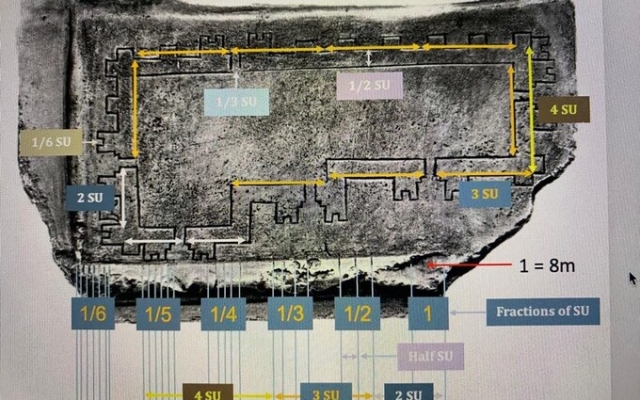 Sumerian code has been deciphered, revealing «divinely inspired» building instructions
Sumerian code has been deciphered, revealing «divinely inspired» building instructions
Sumerian «sacred code» has been deciphered, revealing divinely inspired construction instructions construction as reflected in the Bible.
Experts were puzzled after unearthing a 4,000-year-old statue of a leader named Gudea, which depicts an architectural plan, an inscription claiming he built a temple commanded to him in a dream, and “the ruler » undeciphered sizes.
British Museum archaeologists have now cracked the «sacred code» of these mysterious dimensions after finding a lost temple in Iraq that they have determined is a divine holy site intended by Gudea's plan.
< p>Discovery of a temple in the ancient city of Girsu in Iraq allowed experts to test their theories about the size of the “ruler” and establish that it represents an extremely accurate and large-scale image of the Sumerian sanctuary.
Dr Sebastien Rey, director of the British Museum's Iraq project, said: “This is similar to the precise measurements we see in the Bible at a much later period, for example on the Ark or Solomon's Temple.”
p>
He added: “It took 140 years to solve this problem, this is a very important point.”
“Mathematics seemed divine to the Sumerians. It was the sacred mathematics of the architectural plan, the sacred code.
“This shows that Gudea actually built the temple after being told to do so in a dream, and shows that the Sumerians were capable of scaling models up and down. The plan matches the temple site perfectly.»
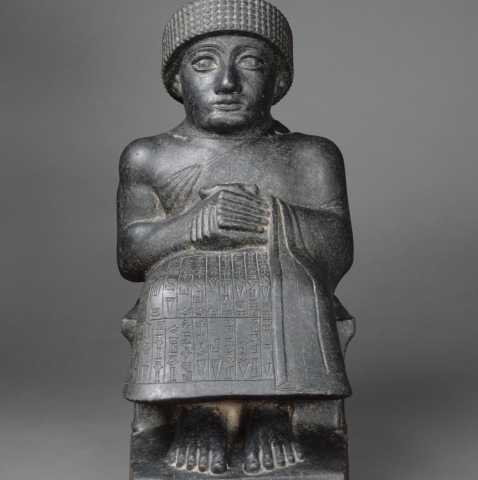 Statue of Gudea, Neo-Sumerian period, c. 2090 BC BC, Mesopotamia, probably from Girsu (modern Tello, Iraq). Photo: SEPIA TIMES/UNIVERSAL IMAGES GROUP VIA GETTY
Statue of Gudea, Neo-Sumerian period, c. 2090 BC BC, Mesopotamia, probably from Girsu (modern Tello, Iraq). Photo: SEPIA TIMES/UNIVERSAL IMAGES GROUP VIA GETTY
Recently, in a ruined palace complex, the team discovered a fragment of a tablet that has similar dimensions and may be another architectural plan suggesting widespread use of these ancient «blueprints.»
The Sumerian civilization was the first in the world to invent writing, number systems, bureaucracy and the state, and texts from the 3rd millennium BC contain details of a particularly cultural ensi (priest-ruler) named Gudea.
The ruler ruled the now-ruined city of Girsu in southern Iraq, where French archaeologists In the 19th century, Sumerian civilization was first rediscovered and several statues of Gudea were extracted from clay.
One of them depicts the ruler sitting with an architectural plan on his lap, along one side of which runs a “ruler”, as well as an inscription stating that in a dream the Sumerian god Ningirsu instructed him to rebuild his temple in the 21st century BC .
The measuring “ruler” looked like a counter, increasing by marks from one line to six lines and then stopping, in a system that has baffled experts for more than a century.
Dr. Ray's team worked on a theory that Unlike distances at which the numbers kept going, the Sumerian system worked more like clock time, reaching a certain distance before the measurement began again. In this way, the ancient architectural plan will be divided into repeating parts of the distance.
In 2022, the British Museum working at Girsu in Iraq discovered a huge temple complex which they believed must have been dedicated to the city's patron deity Ningirsu, and its huge outer walls appeared to match almost exactly the architectural sketch of a statue of Gudea. /p>
They then plotted the newly excavated site with the fractional measurement system they theorized and realized that it worked perfectly, and the site was divided into distances from «one to six» in the Sumerian system, the terminology of which is unknown, each unit corresponds to approximately eight modern meters.
The temple walls are four meters thick, which corresponds perfectly to half a Sumerian unit.
Dr. Ray said the system had to be flexible so that other measurements could be introduced into the rotating system of units. which could be enlarged or reduced.
Simulations have proven that the Sumerians appear to have worked from precise plans, such as the one immortalized on the statue of Gudea, and that they could scale up to the enormous size of the temple.< /p>Revisiting the foundations of civilization itself
The muezzin calls out to the faithful in the wee hours and is answered by the sound of shovels in the darkness.
The community gathered in the remote Iraqi village of Nasr has come not to pray, but to dig. we make our way through the mountain of dust with the British Museum team, who are re-exploring the foundations of the sacred city and civilization itself.
The team and villagers set off each morning along dirt roads to the 5,000-year-old city of Girsu, the ruins whose discovery first revealed to the world the existence of the Sumerians, an ancient society that created cities, writing, the state, and the myth of a devastating global flood that would be reflected in the Bible .
Archaeologists working at Girsu recently discovered that the monumental structure at the site was a hydraulic device designed not to protect against floods, but to protect civilization. drought is a threat, and the latest revelation has further heightened the interest of Iraqi officials eager to explore its tourism potential.
The challenge for the British Museum team is to ensure that this treasure and monument to human ingenuity, a city that thrived on water and then collapsed without it, is not washed away by the fickle elements that shaped its history.
< p>“It all starts with water” and ends with water,” said Dr. Sebastian Rey, an archaeologist and director of the Girsu Project, which is excavating, researching and preserving the site. The site is dangerously exposed to irregular Mesopotamian rains and flooding caused by climate change in southern Iraq.
“Water brings life to Iraq's flat floodplains, but it can also bring devastation, and has done so since time immemorial. said Dr. Ray. “It is no coincidence that the story of the Flood originates in Sumer.”
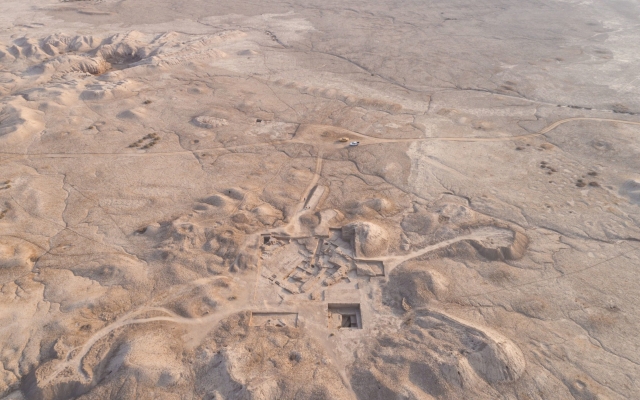 A team of archaeologists has discovered the remains of a lost Sumerian palace in the ancient city of Girsu, built at least 4,500 years ago. Photo: BRITISH MUSEUM/PA
A team of archaeologists has discovered the remains of a lost Sumerian palace in the ancient city of Girsu, built at least 4,500 years ago. Photo: BRITISH MUSEUM/PA
The excavation and conservation work is being carried out by a British Museum team housed in a concrete block house surrounded by stray dogs and cinder block walls, under the supervision of armed police and archaeological forces who ensure the safety of the Girsu site and its artefacts. In Iraq, theft of ancient artifacts is punishable by death.
The sheikh of the local tribe also promised his protection and unhindered management of the local workforce, who join British Museum experts every morning at 4.30am to set out from the palm trees of the village to the barren Tell Telloh escarpment, the Arabic name for the Girsu site.
Followed by following the call to prayer, a convoy of trucks bristling with shovels moves toward a jagged white ridge that rises prominently above the floodplain, glowing in the predawn darkness along with the burning torch posts of distant oil refineries.
As Dr. Ray and his team leap from four-wheel drive trucks onto the vast lunar landscape of Girsu, their footsteps cut through a crust of baked clay and plunge into several inches of spongy powder that stretches for acres in all directions. /p>
This is not sand, but the remains of thousand-year-old adobe buildings in which the sophisticated ancient inhabitants of Girsu once lived, and have since dissolved in a thick layer of yellow mud.
Trenches sunk in clay< p> “When you walk along Girsu, you walk through the ruins of civilization. It's right there on the surface,” Dr. Ray explained. «He turned to dust.»
It wasn't always like this. On relatively cool mornings, workers in the keffiyeh move wheelbarrows back and forth from deep trenches dug into the clay, clearing away the mud brick foundation that has offered new insights into the old civilization.
The site has been inhabited since around 5000 AD BC e., during the first tentative steps of humanity towards urban life, and by the end of the 3rd millennium BC. e. — before the complete disappearance of the woolly mammoths — it became a prosperous city with a competent bureaucracy and a canal system that made it «like Venice or Bruges,» Dr. Ray said.
By 2150 BC. e. it experienced a «golden age» under the priest-ruler Gudea, who, according to ancient Sumerian texts, was inspired in a dream to build a vast temple to the warrior god and patron deity of Girsu, Ningirsu, which a British Museum team excavated in 2022, although that archaeologists have come to the consensus that it does not exist.
The team also excavated the thick mud ramparts of the palace, or «central archive» of a bureaucracy so meticulous that it recorded the deaths of individual sheep on its premises, as evidenced by hundreds of clay tablets carefully removed from the palace complex.
Experts also have solved the mystery of the Hellenistic temple that once stood on this site, suggesting that it may have been founded by Alexander the Great himself.
In the wadi's labyrinth that cut through the clay, the team found the only known surviving remains of a Sumerian sacrificial bull, its gleaming white ribs still clinging to the remains of the mud brick in which it was ritually buried.
These breakthroughs were made despite previous French expeditions to Girsu, one of which revealed the existence of the Sumerians to the world in the 19th century, «destroying» the site.
The French Dr. Rey worked to restore the site. the more aggressive archeology of his compatriots.
“They said the place was 'exhausted,' that there was nothing left to find,” explains the archaeologist and curator between puffs of thin, aptly named Sumer cigarettes sold in Iraq.
“We can say that we returned to the «crime scene», but new methods allowed us to make new discoveries.»
Finds from the scene are taken back to the block house and transferred to the «archaeological production line» created by a team of English, Turkish, Italian and Lebanese experts: the pottery is first cleaned and examined in a courtyard blooming with bougainvillea and pomegranates.
Stopping periodically to light the Sumer and feed the kitten adopted as a mascot, the British Museum team records, cleans, draws and photographs the finds continually being extracted from the Girsu clay, and prepares the best artefacts for shipment within six hours. trip to Baghdad under the close supervision of Iraqi Deputy Director of Excavations Dr. Fatima Hussein.
Baghdad is showing growing interest in the site. Following the paths along which Sumerian priests would have led crowds to worship, Ali Obaid Sholgam walks through the dust of Girsu to survey the site, with his entourage following him at varying distances under the morning sun, already approaching 30 degrees.
< p>The director of Iraq's State Antiquities Authority is greeted by a chorus of «salaams» from workers in the trenches, and he smokes his breakfast laid out on a carpet in the shade as he listens to Dr. Ray tell him in Arabic about the site the authorities hope to develop into a tourist destination.
Deep love for the Girsu site
Mr Sholgam told The Daily Telegraph: «When I first signed up for my position, the first place I visited was Girsu.»
«Girsu is a very important city and it has a very big influence on the entire civilization. I have a deep love for the Girsu site, and this is much more important to me now.
“Girsu has many surprises in store for the future. We hope that Dr. Sebastian and Dr. Fatima will continue to successfully perform this operation and achieve excellent results in the future.»
Mr. Sholgam inspected the first information boards created for the site, anticipating an unspecified date when the ancient city might begin welcoming tourists, as it once hosted devotees of the god Ningirsu, in its pomp as a pilgrimage site similar to the Sumerian «Jerusalem or Rome.”
The most important factor in this regard, as in the entire Sumerian world, is water. The rain sweeping through the wadis and ravines that cross the site threatens to turn the Sumerian bricks that are the remains of Girsu into mud.
Dr Ebru Torun, a conservator on the British Museum team, directs local workers to use river clay once used by the Sumerians themselves to anchor the brickwork, and stone dams were built to prevent the drought-stricken city from being washed away by floods.
She said it would rain heavily. turn the ancient brick «back to mud» and the salts rising with the dampness «expand and split the brickwork».
Conserving this site is one of the British Museum's priorities, and this task is becoming increasingly urgent , experts say. The increasingly sporadic nature of Iraq's rain is said to mean that downpours now carry a greater risk of flash flooding.
Rain is unthinkable as the sun rises to its zenith and the muezzin sounds again. across the plain, the crew and workers leave their tools and return to the village to rest before the call to prayer sounds again and they are called upon to protect Girsa, the once holy city.





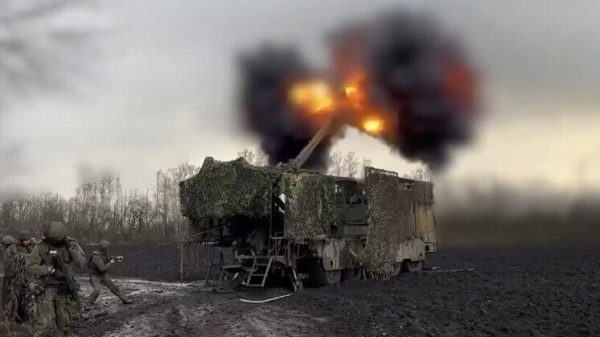





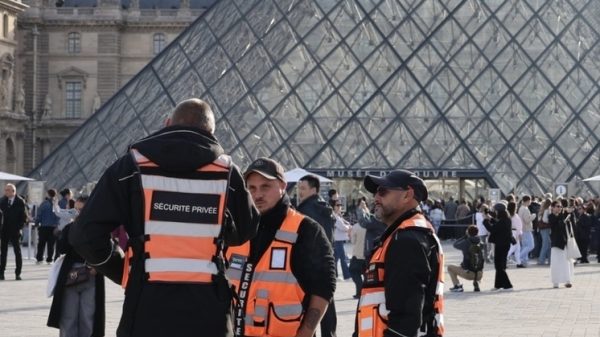



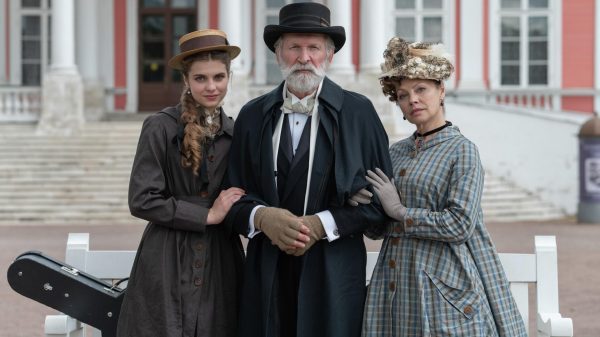
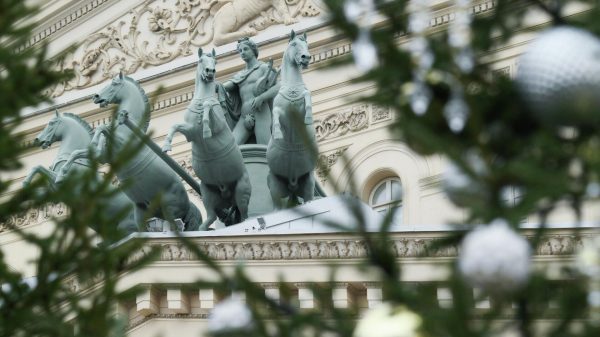


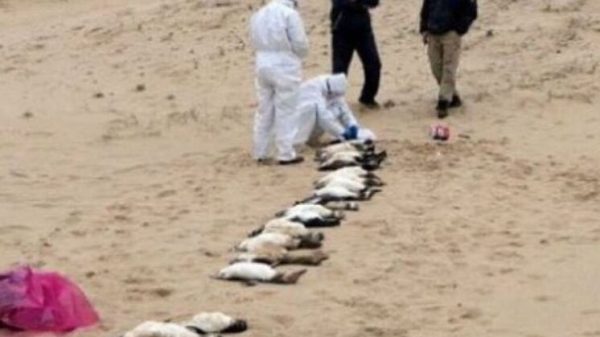














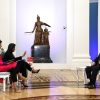


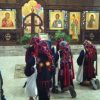


















Свежие комментарии